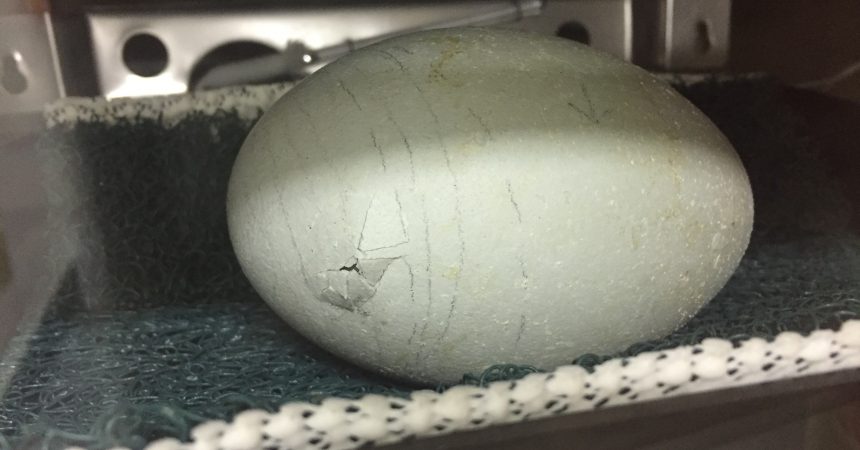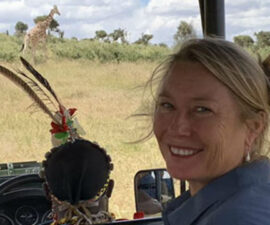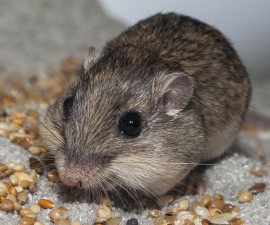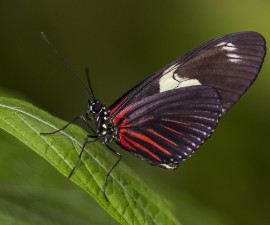On January 4, California condor Pismo laid the first condor egg of the season–not just at the San Diego Zoo Safari Park, but in the world! Now, after 55 days of incubation, her egg is ready to hatch.
A few days ago, the air cell in the egg began to quickly expand. The air cell is a pocket of air at the big end of the egg. Next time you crack open a chicken egg at home, look for the air cell. Once the air cell expands against the embryo’s beak, the membrane of the air cell is pierced, initiating pulmonary respiration; this is the first time the condor chick is breathing air. The embryo is breathing in more oxygen than can enter through the pores of the eggshell. Consequently, carbon dioxide builds up in the egg. This buildup will stimulate the embryo to start pushing from inside the egg until the shell is finally broken. After a thin spot is worn into the shell by the embryo’s beak, a dime-sized bump is raised in the shell. This is called a “pip.”
The pip-to-hatch period can vary for each species of bird, but for California condors it can last between 48 and 72 hours. We have seen some parent-hatched chicks take a little longer (~85 hours) to hatch with no ill-effects.
As long as everything continues to go well, we are expecting this egg to hatch under parents Xas (pronounced “HAWSS”) and Pismo (pronounced “PIZ-mo) around March 3.
If you want more exciting California condor information, check out our Condor Cam. It’s a rare opportunity to peek inside an active condor nest at the Safari Park. Currently, Sisquoc and Shatash are incubating their egg, which should hatch around March 31 and will be raised live on our webcam until it leaves the nest at about 5 months of age.
Ron Webb is senior condor keeper at the San Diego Zoo Safari Park





